Semi-automatic synthesis and biodistribution of N-(2-18F-fluoropropionyl)-bis(zinc (II)-dipicolylamine) (18F-FP-DPAZn2) for AD model imaging
- PMID: 28431519
- PMCID: PMC5399867
- DOI: 10.1186/s12880-017-0200-1
Semi-automatic synthesis and biodistribution of N-(2-18F-fluoropropionyl)-bis(zinc (II)-dipicolylamine) (18F-FP-DPAZn2) for AD model imaging
Abstract
Background: Phosphatidylserine (PS)-targeting positron emission tomography (PET) imaging with labeled small-molecule tracer is a crucial non-invasive molecule imaging method of apoptosis. In this study, semi-automatic radiosynthesis and biodistribution of N-(2-18F-fluoropropionyl)-bis(zinc(II)-dipicolylamine) (18F-FP-DPAZn2), as a potential small-molecule tracer for PET imaging of cell death in Alzheimer's disease (AD) model, were performed.
Methods: 18F-FP-DPAZn2 was synthesized on the modified PET-MF-2V-IT-I synthesizer. Biodistribution was determined in normal mice and PET images of AD model were obtained on a micro PET-CT scanner.
Results: With the modified synthesizer, the total decay-corrected radiochemical yield of 18F-FP-DPAZn2 was 35 ± 6% (n = 5) from 18F- within 105 ± 10 min. Biodistribution results showed that kidney has the highest uptake of 18F-FP-DPAZn2. The uptake of radioactivity in brain kept at a relatively low level during the whole observed time. In vivo 18F-FP-DPAZn2 PET images demonstrated more accumulation of radioactivity in the brain of AD model mice than that in the brain of normal mice.
Conclusions: The semi-automatic synthetic method provides a slightly higher radiochemical yield and shorter whole synthesis time of 18F-FP-DPAZn2 than the manual operation method. This improved method can give enough radioactivity and high radiochemical purity of 18F-FP-DPAZn2 for in vivo PET imaging. The results show that 18F-FP-DPAZn2 seems to be a potential cell death tracer for AD imaging.
Keywords: 18F-FP-DPAZn2; 18F-NFP; Cell death; Semi-automatic synthesis; Zinc(II)-dipicolylamine.
Figures
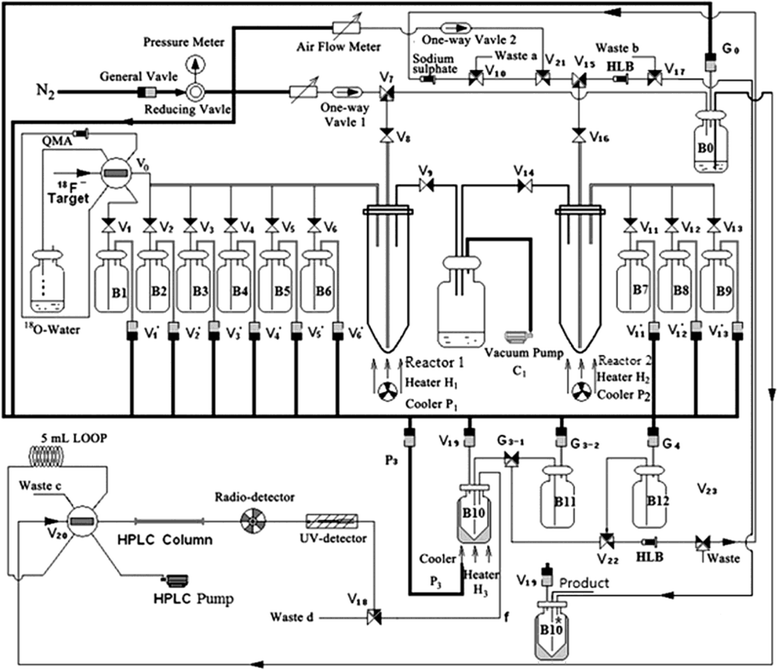
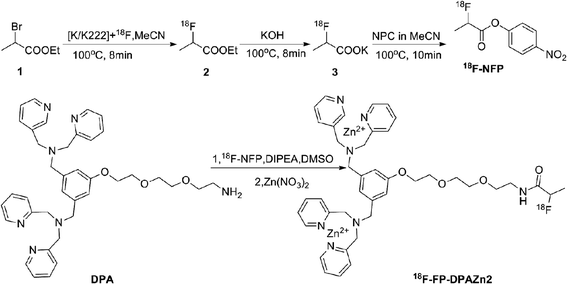
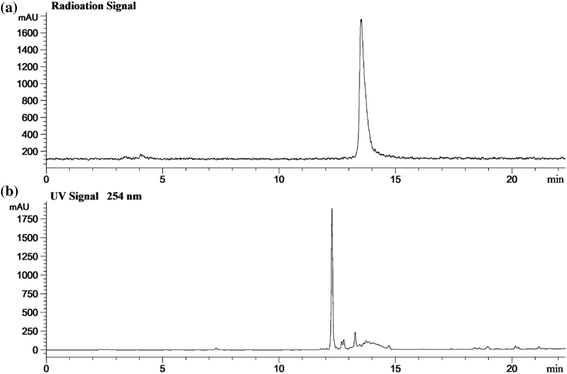
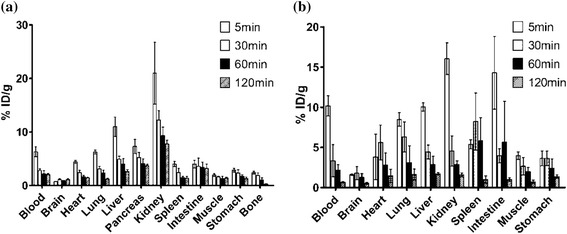
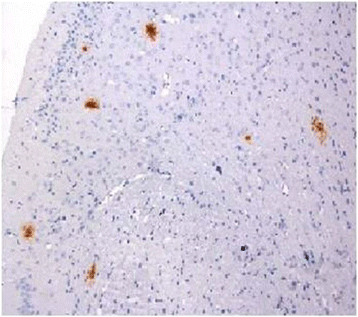
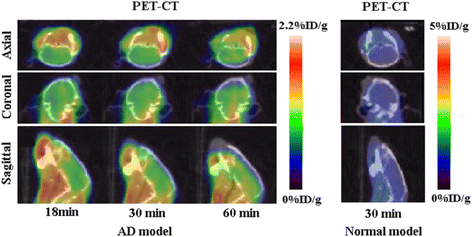
Similar articles
-
Noninvasive positron emission tomography imaging of cell death using a novel small-molecule probe, (18)F labeled bis(zinc(II)-dipicolylamine) complex.Apoptosis. 2013 Aug;18(8):1017-27. doi: 10.1007/s10495-013-0852-4. Apoptosis. 2013. PMID: 23613106
-
Comparative uptake of ¹⁸F-FEN-DPAZn2, ¹⁸F-FECH, ¹⁸F-fluoride, and ¹⁸F-FDG in fibrosarcoma and aseptic inflammation.Appl Radiat Isot. 2014 Aug;90:158-64. doi: 10.1016/j.apradiso.2014.03.030. Epub 2014 Apr 5. Appl Radiat Isot. 2014. PMID: 24751349
-
Positron emission tomography imaging of cardiomyocyte apoptosis with a novel molecule probe [18F]FP-DPAZn2.Oncotarget. 2015 Oct 13;6(31):30579-91. doi: 10.18632/oncotarget.5769. Oncotarget. 2015. PMID: 26416423 Free PMC article.
-
The use of the exploratory IND in the evaluation and development of 18F-PET radiopharmaceuticals for amyloid imaging in the brain: a review of one company's experience.Q J Nucl Med Mol Imaging. 2009 Aug;53(4):387-93. Q J Nucl Med Mol Imaging. 2009. PMID: 19834448 Review.
-
18F-labeled proteins.Curr Pharm Biotechnol. 2010 Sep 1;11(6):572-80. doi: 10.2174/138920110792246564. Curr Pharm Biotechnol. 2010. PMID: 20497120 Review.
References
MeSH terms
Substances
LinkOut - more resources
Full Text Sources
Other Literature Sources
Medical
Miscellaneous

